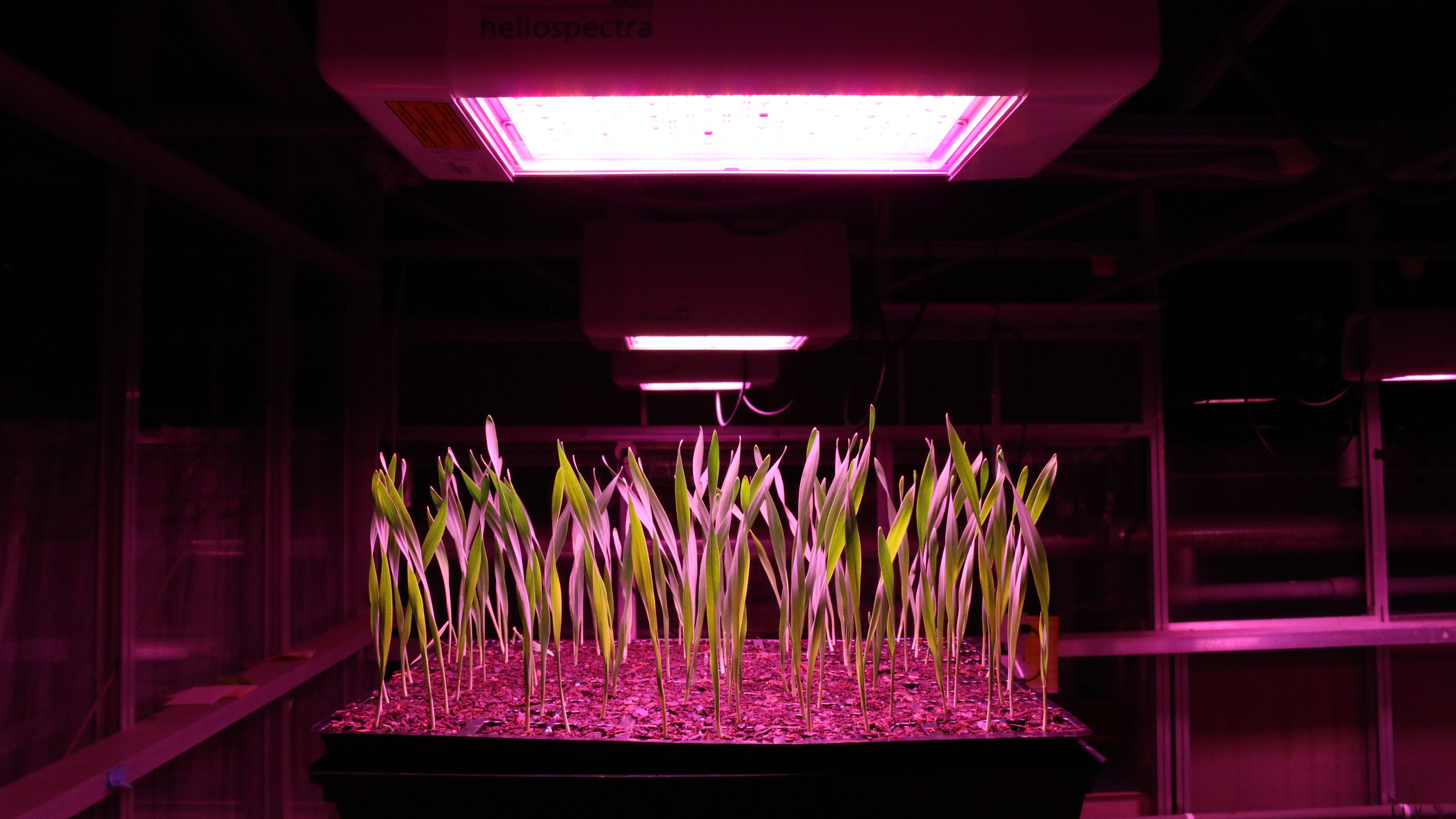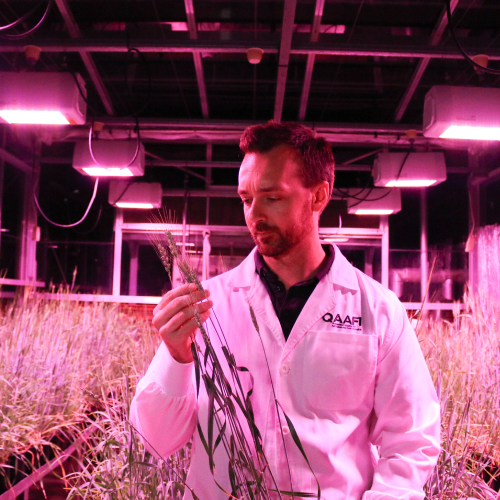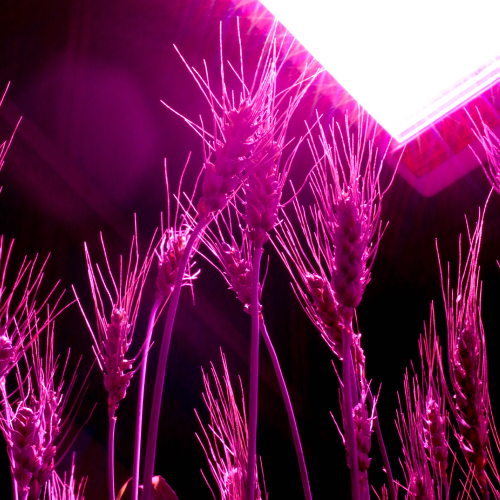Crop improvement rates are lagging behind expected growth in demand, but a UQ innovation is set to make it easier to close the gap.

Development of speed breeding protocols led by UQ are a game-changer for global plant breeders.
Not since Norman Borlaug’s shuttle breeding technique – that made possible two generations of wheat a year – has there been such excitement worldwide about the recent publication of these protocols in ‘Nature Plants’ on January 1, 2018.
With speed breeding, however, the number of generations possible has been upped to six for bread wheat, durum wheat, barley and chickpea. This means, some plant material can cycle from seed to seed in just eight weeks. Canola is currently at four generations a year and more protocols are under development, including for lentils.
The accelerated generation times are achieved by “leaving the lights on” in the glasshouse for 22 hours a day. Once optimisations are made for light intensity, wavelength, temperature and nutrients, the photoperiod induces plants into the reproductive phase and flower faster than normal.
Speed breeding is an Australian innovation born at UQ’s School of Agriculture, and QAAFI’s Lee Hickey contributed to early development of the technology during his PhD with support from GRDC’s scholarship program.
Dr Hickey said the protocols have been further refined for more than 10 years at UQ. Over that time, the protocols benefitted from input from other researchers, including Professor Robert Park of the University of Sydney and the team led by Professor Brande Wulff at the John Innes Centre in the UK.
“The technique will likely work for many crop species that respond to longer daylight hours, such as sunflowers,”
“It will, however, require additional refinements for short-day species, such as maize, sorghum and rice.” - Dr Hickey said.

Lighting the way
It was NASA that first tried using continuous light to grow wheat in outer space, inspiring Dr Hickey to contemplate a new way to grow plants on planet Earth.
“The cool thing about this story is that when we first proposed working with continuous light, people thought we were crazy and that it absolutely would not work,” Dr Hickey said.
“The success we had shows the value of thinking outside the box, no matter how outlandish the idea may seem to conventional beliefs.”
So far speed breeding has led to the faster development of mapping populations for trait discovery, it has fast tracked trait selection, and accelerated trait stacking into elite germplasm. It is even being used in the Netherlands to boost tomato production from glasshouses by 30 per cent.
Breeding companies in Australia were quick to trial and adopt the technique, with LongReach Plant Breeders and Dow AgroSciences working directly with Dr Hickey and his speed breeding facilities.
Tackling grain dormancy
Already, a milling wheat variety called DS Faraday has been developed that was speed bred by researchers at the School of Agriculture to incorporate grain dormancy genes.
This new genetic material suppresses damage to grain quality from pre-harvest sprouting. The variety is described as especially suited to the northern growing region.
“I view speed breeding as just one tool in the shed that can be used in conjunction with many others to accelerate the delivery of improved cultivars that are capable of boosting crop productivity,” said Dr Hickey.
“In my opinion, the really big gains for the industry will come from integrating speed breeding with trait-related technologies, including gene editing or by making it far easier to tap the genetic diversity in genebanks, similar to what we did to develop DS Faraday.”
Currently, Dr Hickey is working with LongReach Plant Breeders to use speed breeding to rapidly stack (or combine) disease resistance traits in to their elite breeding lines.
But he warns that glasshouse growth will not always reflect performance in the field: “Speed breeding does not diminish the importance of testing new cultivars over several seasons in the field,” he said.
 Speeding up research
Speeding up research
Speed breeding is now being used to accelerate the discovery rate of new and valuable traits by pre-breeding researchers, including root architecture traits that have the potential to better adapt wheat crops to drought, barley resistance to foliar diseases (namely powdery mildew, pot blotch, net form net blotch, spot form net blotch), and resistance to barley leaf rust.
Speed breeding accelerates the creation of mapping populations. These are developed by crossing plant lines that provide the maximum contrast possible for the desired trait, such as fully disease susceptible versus resistant. This contrast makes it possible to locate sites in the genome responsible for the trait.
Dr Hickey said the speed breeding protocols are scalable, flexible and can incorporate technological advances, for example in LED lights. He is especially keen on solar panel innovations that could power glasshouses while letting through wavelength of light that plants need to grow.
In addition, Dr Hickey has been working with the International Maize and Wheat Improvement Center (CIMMYT) in Mexico to help them trial the use of speed breeding. The CIMMYT wheat breeding program was responsible for the Green Revolution and it continues to provide wheat cultivars to the world that are known for their broad resilience under variable growing conditions.
“The current rate of improvement of important crops is inadequate to meet future demand and long generation times contribute to the problem,” Dr Hickey said.
“With speed breeding, the hope is that we can shorten generation times to accelerate breeding and research programs globally.”
Republished from GRDC’s Ground Cover publication.



